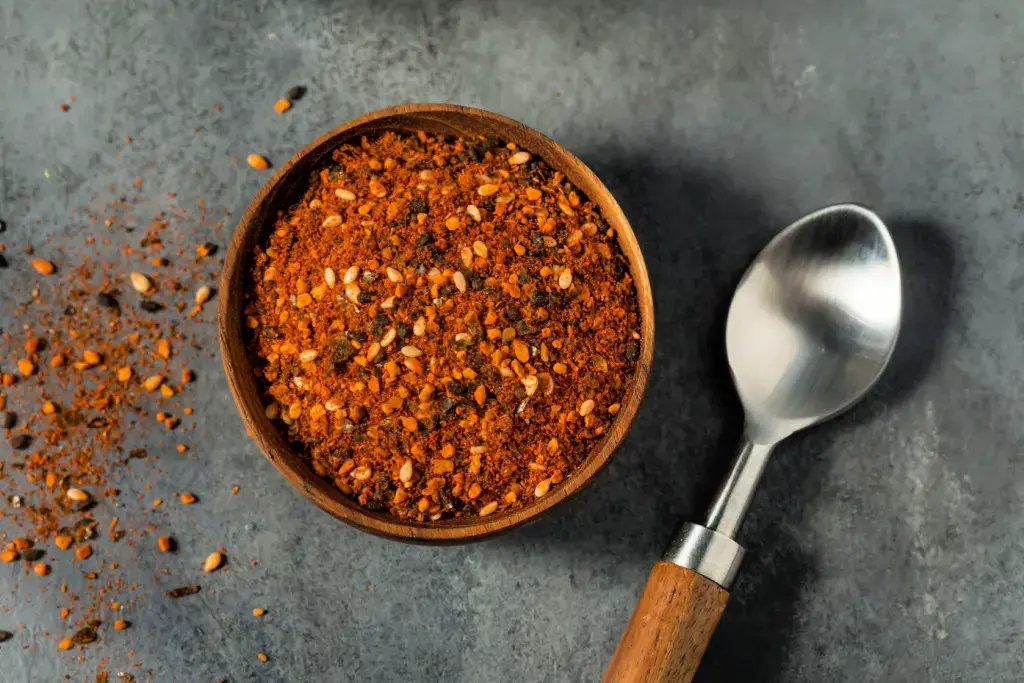Shichimi is a flavorful Japanese spice blend that packs a punch in every sprinkle. Originating from the Edo period, this seven-flavor chili pepper mix has captured the hearts of food lovers worldwide. This unique blend of spices brings a delightful kick and spicy depth to any dish, making it a must-have in your kitchen! Let’s find out more about this delicious spice blend!
Table of Contents
ToggleWhat is shichimi?
Shichimi, or shichimi togarashi, is a traditional Japanese spice blend of seven ingredients. This seasoning, “nana-iro togarashi” in the Tokyo region, is common in dishes like udon, soba, yudofu (boiled tofu), and tonjiru (pork soup). Famous brands include Yagenbori from Tokyo, Shichimiya from Kyoto, and Yawataya Isogoro from Nagano, often referred to as Japan’s three major shichimi producers.
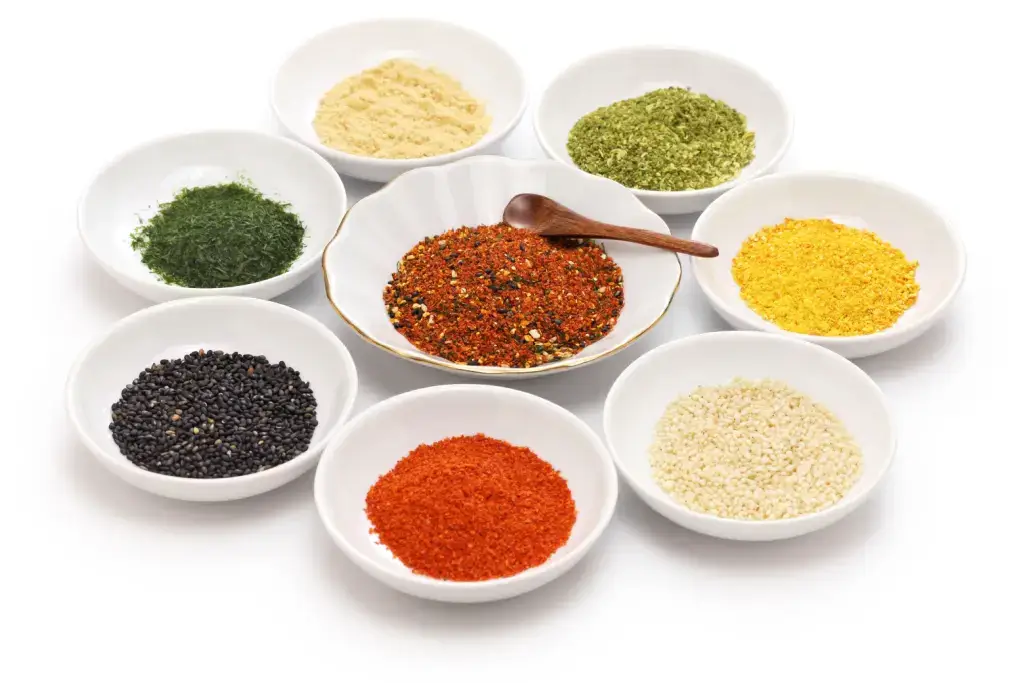
It can be sprinkled on various foods, enhancing Japanese and Western cuisines. It pairs well with meats, soups, and side dishes such as fried chicken, barbecue, salads, and popcorn. Unique variations include yuzu shichimi, which adds a citrusy aroma that is perfect for salads. There’s also sansho shichimi, which offers a more intense flavor and is excellent for grilled or fried foods.
Where did it come from?
Shichimi was created in Japan during the Edo period in 1625. It was first created by a merchant named Tokuemon at the Yagenbori herb shop in Tokyo’s Higashi-Nihonbashi district. Initially sold in pharmacies for its medicinal properties, this seven-flavored spice blend became famous as a seasoning. Street vendors soon started using it, becoming a favorite at neighborhood festivals.
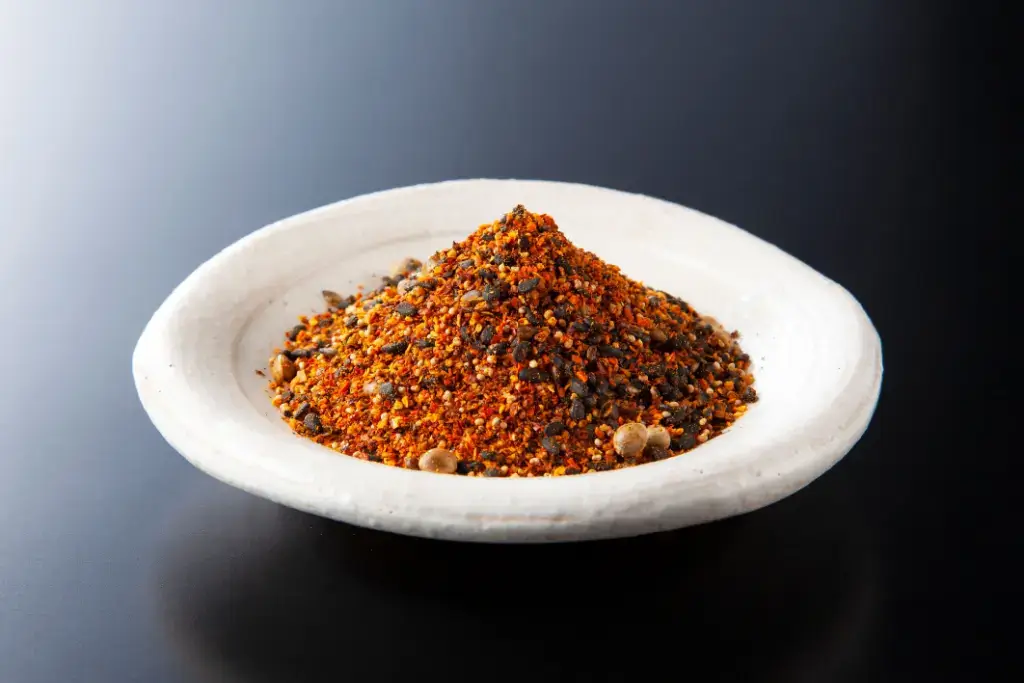
The use of chili peppers in Japan can be traced back to the early 17th century when they were likely introduced by Portuguese missionaries or returning Japanese troops. It’s also connected to karashi-yu, a hot water drink with chili pepper powder for temple visitors and monks. Established shops maintain using high-quality ingredients, often from local farms. These shops continue to keep the legacy of this Japanese condiment alive!
What flavors are in shichimi?
The main ingredients include chili pepper for a spicy kick, sansho pepper for a citrusy tang, and sesame seeds that add a nutty flavor and crunch. Poppy seeds are also for texture, while nori seaweed gives it an umami edge. Ginger also adds warmth and spiciness; yuzu peel contributes a bright, citrusy aroma. These ingredients combine to create a unique flavor profile that enhances various dishes.
Different manufacturers in Japan may adjust the recipe, adding hemp seeds, shiso, or Sichuan peppercorns for extra flavor, but the core remains consistent. Each component brings health benefits, such as aiding digestion, improving blood flow, and boosting heart health. Sesame seeds are rich in vitamins and minerals that may prevent diabetes. They may also support heart and lung health, while ginger aids digestion and reduces joint pain.
The chili pepper contains capsaicin, which helps clear sinus congestion, promote blood circulation, and aid in weight loss. Nori seaweed is high in iodine and iron, essential for red blood cell production. If you’re looking for a way to spice up your dishes or seek the health benefits of its ingredients, this seasoning is perfect!
Are you looking for some great snacks? Check out Sakuraco! Sakuraco delivers traditional Japanese snacks, teas, sweets, and snacks from local Japanese makers directly to your door so you can enjoy the latest treats from Japan!
What Japanese dishes use shichimi?
Donburi
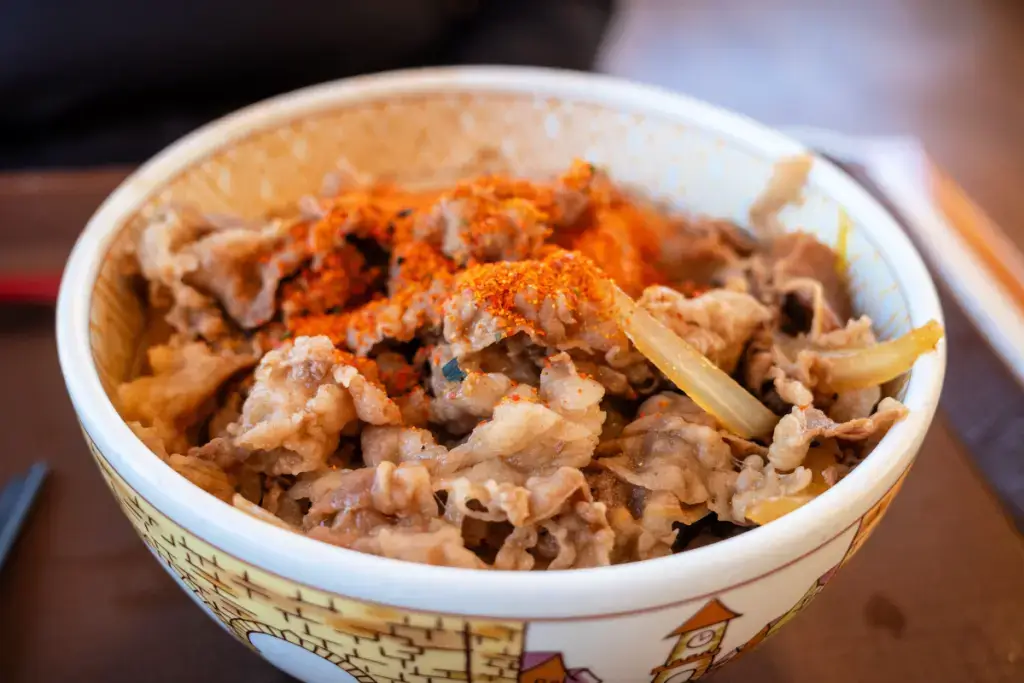
Shichimi togarashi is an excellent seasoning for donburi. Adding the spice enhances the flavor and brings a subtle heat to your rice bowl. Whether you are enjoying gyudon (beef bowl), oyakodon (chicken and egg bowl), or kaisendon (seafood bowl), a sprinkle can improve the taste. Combining chili pepper, sansho pepper, and sesame seeds brings crunch and an aromatic flavor to every bite.
Dango
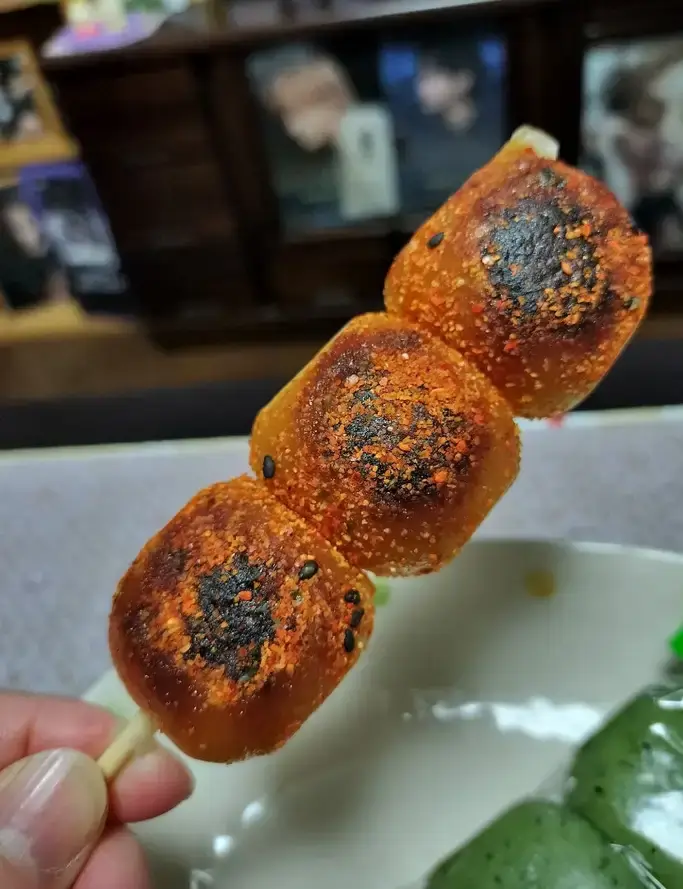
Dango? Isn’t that a dessert? Generally, dango is a sweet snack, but you can also use it for a savory treat! For example, grilled dango with soy sauce and shichimi creates a delicious balance of flavors and textures. The soy sauce caramelizes on the grill, giving the dango a sweet and savory glaze, while the seven-flavor spice adds a spicy kick and aromatic complexity. As a result, this combination transforms a simple snack into an exciting and flavorful treat!
Ramen
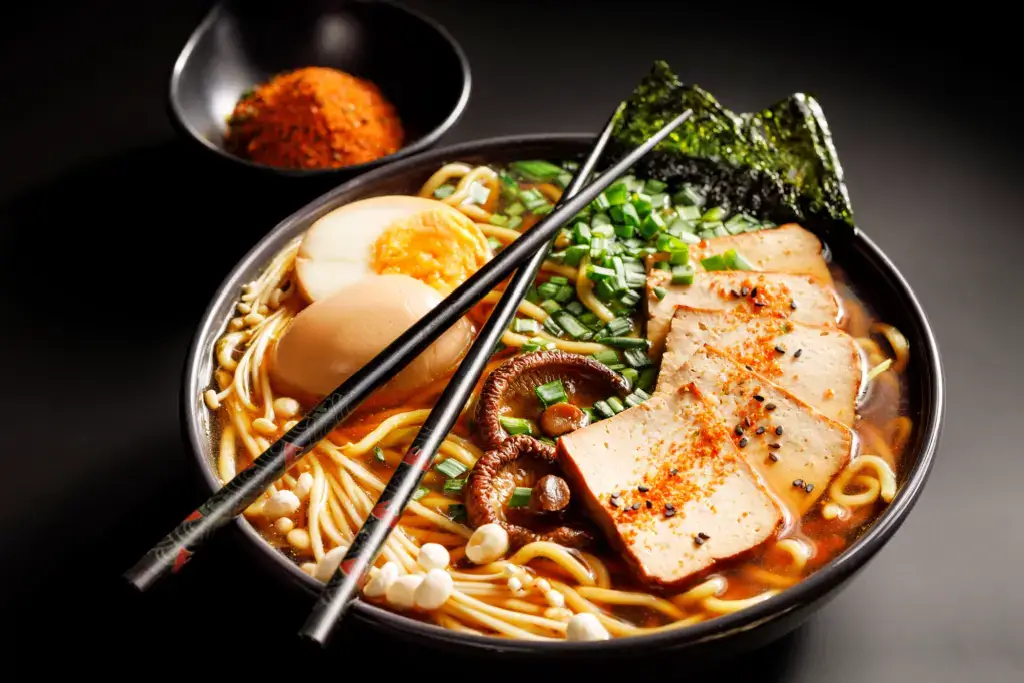
You might also have seen some other customers eating ramen with shichimi. The spice mix adds flavor and a hint of spice to your noodles. The spice enhances the broth’s richness and complexity, whether you prefer shoyu ramen, miso ramen, or tonkotsu ramen. The chili pepper brings a pleasant heat, while the sansho pepper adds a citrusy note that brightens the dish. You should try adding it to your ramen next time!
Why should I try shichimi?
You should try shichimi to improve your culinary adventures and enjoy the versatile and nutritious spice blend that has stood the test of time! Its rich history, unique flavor profile, and numerous health benefits make it an essential addition to your spice rack. Don’t miss out on enhancing your meals with the magic of this spice blend—try it today and experience a new world of flavor! Have you ever eaten shichimi? Did you enjoy it? Let us know in the comments below!

